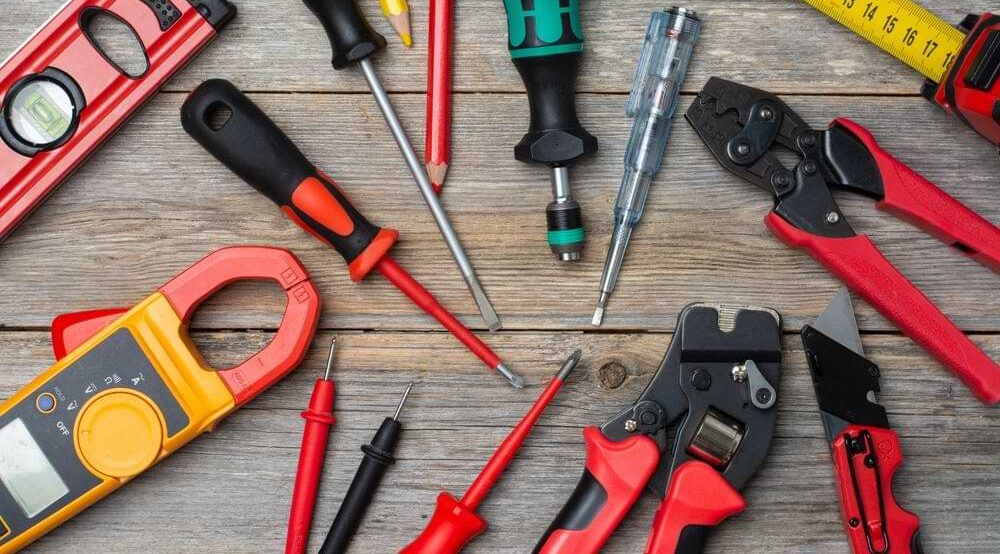As we approach 2025, the role of an electrician continues to evolve alongside advancements in technology. With 185,200 electricians employed in Australia, the profession represents a substantial and vital part of the nation’s skilled trades, according to Jobs and Skills Australia. Whether you’re a seasoned professional or new to the trade, having the right gear and tools is vital to getting the job done efficiently and safely. From electrical testers to specialised power tools, this article explores the must-have tools every electrician should consider.
1. Multimeter: Precision in Every Measurement
A multimeter remains one of the most essential tools for electricians. It allows you to measure voltage, current, and resistance, which are vital when diagnosing electrical issues or setting up electrical circuits. The best models will offer automatic range detection, backlit screens for visibility, and functions for testing batteries, diodes, and continuity. With increased reliance on digital technologies in the modern age, investing in a multimeter that delivers high accuracy is an excellent choice for electricians.
2. Voltage Testers: Safety First
For electrical work, safety is always the top priority. Voltage testers are indispensable for verifying that circuits are powered down before beginning work. Modern versions come with additional features like built-in LED lights for low-light conditions, ensuring electricians can safely assess voltages at any hour of the day.
3. Power Drills and Impact Drivers: Time-Saving Tools
Power drills and impact drivers are not just for construction workers—they’re indispensable in an electrician’s toolkit, too. These tools are essential for installing outlet boxes, switch plates, and cables. Look for compact, battery-operated models for ease of use in tight spaces. High-quality drills and impact drivers save considerable time and effort, allowing you to focus more on the job at hand. Choosing quality tools for electricians ensures reliability and reduced risk of downtime.
4. Cable Cutters and Strippers: Precision for Efficient Work
The right set of cable cutters and wire strippers enables precision when handling wires of various sizes. For electricians, using professional-grade tools that can cut, strip, and splice with ease means not having to fight against frayed or torn wires. These tools are designed to give you clean, accurate cuts to avoid electrical hazards.
5. Conduit Benders: Shaping and Securing Wiring
Bending conduits is a frequent task on an electrician’s to-do list, whether you’re working on light fixtures, security cameras, or more complex systems. Conduit benders are made specifically to make curved and angled cuts with minimal effort and maximum precision. Whether you’re working with steel or PVC conduit, finding the right bender can save valuable time on job sites.
6. Level and Laser Levels: Precision Alignment for Fixtures
Properly installing switches, outlets, and lighting fixtures is important for both safety and aesthetic appeal. A level is crucial for ensuring these elements are aligned properly. For more complex tasks, laser levels are becoming more common in the toolkit, offering the precision needed for alignments across long distances. Accuracy in these areas eliminates future issues and ensures your installations are top-notch.
7. Insulated Hand Tools: Protection from Live Circuits
When working in environments where live wires are present, having insulated hand tools is crucial for maintaining personal safety. These tools are coated to prevent electric shock, a potential hazard for electricians. Screwdrivers, pliers, and wrenches with insulated handles help ensure the technician’s protection when working with powered systems.
8. Tool Bags and Organisers: Efficiency and Storage
When working on multiple jobs throughout the day, an organised set of tool bags or toolboxes is essential for efficiency. Ideally, electricians will invest in bags or containers designed for holding specific tools like pliers, drills, or fasteners. Customised pockets, durable zippers, and reinforced seams contribute to a bag’s long-term reliability. An effective tool storage solution allows quick access to equipment, reducing downtime on jobs.
9. Circuit Finder and Breaker Identifier: The Fast Track to Diagnostics
Modern electrical systems can be complicated, and finding the correct circuit or breaker can be time-consuming. Using a circuit finder helps pinpoint the right circuit breaker without any guesswork. A reliable breaker identifier enables quick identification and ensures you don’t need to switch off the wrong power supply while working.
10. Power Inverter and Battery Pack: Keeping Energy Flowing
An essential part of working in remote or outdoor locations, a power inverter and portable battery pack allow you to keep small electrical devices running when you don’t have easy access to a plug. This piece of gear is especially handy for emergency repairs or working off the grid, letting you power tools and devices without the need for nearby electrical sources.
Why Quality Tools Matter
When purchasing tools for the trade, electricians should always prioritise quality and durability. Using professional-grade equipment and quality tools for electricians ensures a longer lifespan and helps maintain high standards of safety and efficiency at the job site. Premium tools are built to withstand the rigours of daily work and often come with warranties, making them a worthwhile investment.
Final Take
In 2025, the tools every electrician uses will play a central role in the efficiency and safety of electrical projects. Modern advancements in tool design ensure that every electrician can complete their work faster, more safely, and with a higher degree of precision. From multimeters to power drills, the proper gear is key to delivering high-quality work on time. By choosing quality tools, you ensure better outcomes for both you and your clients.






